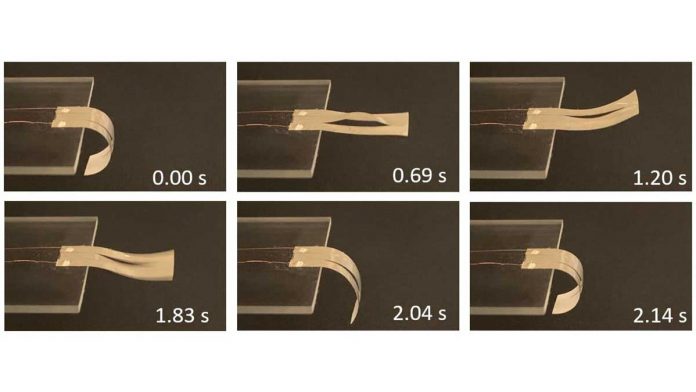North Carolina State University researchers have developed a new design for thermal actuators to create rapid movement in soft robotic devices. A corresponding author of the research paper Yong Zhu has said that the use of thermal actuation is not new for soft robots but the previous models were extremely slow and the researchers made it fast. The device is made of actuators, which creates motion by converting energy into work.
Shuang Wu, a co-author of the research paper and a Ph.D. student at NC State University has said that the structure of the new actuator is bi-stable which made it faster. Wu gave the example of a hair clip. The hair clip remains stable until someone apply a certain amount of energy in it and then it bends over and makes a new shape. The new shape is also stable.
The new thermal actuator is made of bi-stable material but temperature dictates the shape of the material.
The researchers have given two layers of materials on top of each other and in the middle, they have given silver nanowires. The two materials expand at different rates when heated up as different coefficients of thermal expansion. Simply, the structure bends when heated up.
This layered material then curves into one direction. But when we apply voltage in the silver nanowires which heat up the material and the material curves into another direction. After applying a certain temperature, the material forms a new default shape. When the researchers have removed the voltage, the material cooled down and it snaps back to its previous shape. But the two applied temperatures are different, the first one was higher than the second one.
If we apply current in the nanowires constantly, then the material will snap back and forth.

